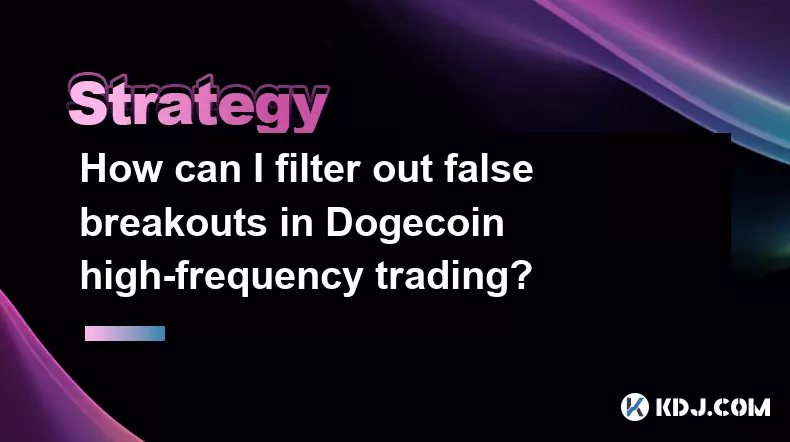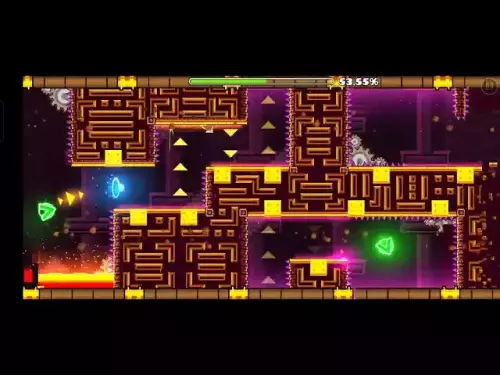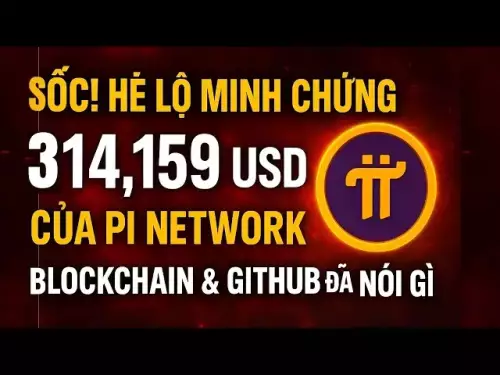-
 bitcoin
bitcoin $109547.008142 USD
0.04% -
 ethereum
ethereum $4011.838726 USD
-0.05% -
 tether
tether $1.000402 USD
-0.01% -
 xrp
xrp $2.798606 USD
0.88% -
 bnb
bnb $970.877944 USD
1.39% -
 solana
solana $202.237275 USD
-0.95% -
 usd-coin
usd-coin $0.999673 USD
0.00% -
 dogecoin
dogecoin $0.229294 USD
-1.15% -
 tron
tron $0.336370 USD
-0.45% -
 cardano
cardano $0.777260 USD
-1.66% -
 hyperliquid
hyperliquid $45.503019 USD
1.73% -
 ethena-usde
ethena-usde $1.000362 USD
0.01% -
 chainlink
chainlink $20.785303 USD
-1.10% -
 avalanche
avalanche $28.755822 USD
-0.11% -
 stellar
stellar $0.358303 USD
-0.48%
Lower shadow line bottom-picking tactics in a sharp drop
Bottom-picking with the lower shadow line during sharp crypto drops can be profitable but risky; use proper risk management and stay informed.
Jun 08, 2025 at 02:14 am

The cryptocurrency market is known for its volatility, and sharp drops can often lead to significant opportunities for traders. One of the tactics used by many traders during these times is bottom-picking using the lower shadow line. This article will delve into the specifics of this strategy, how to identify the right moments to apply it, and the risks involved.
Understanding the Lower Shadow Line
The lower shadow line in a candlestick chart represents the lowest price point reached during a specific period. It is the line extending from the bottom of the candlestick body to the lowest price. This line is crucial for bottom-picking because it indicates where the price has been rejected, suggesting potential support levels.
To effectively use the lower shadow line for bottom-picking, traders need to understand the psychology behind price movements. When the price drops sharply and then rebounds, leaving a long lower shadow, it often means that buyers have stepped in at that level, preventing further decline. This can signal a potential reversal or at least a temporary halt in the downward trend.
Identifying Sharp Drops
A sharp drop in the cryptocurrency market is characterized by a rapid and significant decline in price. These drops can be triggered by various factors, such as negative news, market sentiment shifts, or large sell-offs. To identify a sharp drop, traders should:
- Monitor price charts in real-time to catch the initial decline.
- Use technical indicators like the Relative Strength Index (RSI) to gauge overbought or oversold conditions.
- Pay attention to volume spikes, which can indicate increased selling pressure.
Once a sharp drop is identified, the next step is to look for the formation of a lower shadow line, which can signal a potential bottom.
Executing Bottom-Picking with the Lower Shadow Line
Executing a bottom-picking strategy using the lower shadow line involves several key steps:
- Identify the Lower Shadow Line: Look for candlesticks with long lower shadows, indicating where the price was rejected.
- Confirm Support: Check if the lower shadow line aligns with known support levels, such as previous lows or key moving averages.
- Enter the Trade: Place a buy order at or near the level of the lower shadow line, anticipating a rebound.
- Set Stop-Loss: To manage risk, set a stop-loss order below the lower shadow line, ensuring it is not too close to trigger prematurely.
- Monitor and Adjust: Keep an eye on the price action and be ready to adjust your stop-loss or take profits as the market moves.
Risks and Considerations
While bottom-picking with the lower shadow line can be profitable, it comes with significant risks. The main risk is that the price might continue to fall after hitting the lower shadow line, leading to potential losses. To mitigate this risk, traders should:
- Use Proper Risk Management: Never risk more than a small percentage of your trading capital on a single trade.
- Diversify: Spread your investments across different assets to reduce the impact of a single sharp drop.
- Stay Informed: Keep up with market news and developments that could affect the price of the cryptocurrency you are trading.
Case Studies and Examples
To illustrate the application of the lower shadow line bottom-picking strategy, let's look at a few examples:
- Bitcoin (BTC) Drop in March 2020: During the global market crash, Bitcoin experienced a sharp drop. Traders who identified the lower shadow line near $4,000 and entered a long position could have benefited from the subsequent rebound.
- Ethereum (ETH) Correction in May 2021: After reaching an all-time high, Ethereum saw a sharp correction. The lower shadow line around $1,700 provided a potential entry point for bottom-pickers.
These examples highlight the importance of timing and confirmation when using the lower shadow line for bottom-picking.
Technical Analysis Tools
To enhance the effectiveness of the lower shadow line strategy, traders can use various technical analysis tools:
- Moving Averages: Use moving averages to identify trend direction and potential support levels.
- Fibonacci Retracement: Apply Fibonacci retracement levels to find potential reversal points.
- Candlestick Patterns: Look for bullish reversal patterns like the hammer or bullish engulfing pattern, which often form with a long lower shadow.
These tools can provide additional confirmation and increase the probability of successful bottom-picking.
Psychological Aspects of Bottom-Picking
Bottom-picking during sharp drops requires a strong psychological mindset. Traders must be able to:
- Stay Calm: Avoid panic selling during sharp drops and maintain a clear head to identify potential opportunities.
- Be Patient: Wait for confirmation signals before entering a trade, rather than jumping in prematurely.
- Accept Losses: Understand that not all bottom-picking attempts will be successful and be prepared to cut losses when necessary.
The psychological aspect is crucial, as fear and greed can cloud judgment and lead to poor decision-making.
FAQs
Q: Can the lower shadow line strategy be used on all cryptocurrencies?A: Yes, the lower shadow line strategy can be applied to any cryptocurrency that has sufficient liquidity and trading volume. However, the effectiveness may vary depending on the specific market conditions and the cryptocurrency's volatility.
Q: How often should I check the charts when using this strategy?A: It is recommended to monitor the charts frequently, especially during periods of high volatility. Setting up alerts for specific price levels can help you stay informed without needing to watch the charts constantly.
Q: Is it possible to automate the lower shadow line strategy?A: Yes, it is possible to automate this strategy using trading bots or algorithms. However, automated systems should be carefully tested and monitored to ensure they perform as expected in different market conditions.
Q: What time frames are best for using the lower shadow line strategy?A: The lower shadow line strategy can be applied across various time frames, from short-term intraday charts to longer-term daily or weekly charts. The choice of time frame depends on your trading style and risk tolerance.
Disclaimer:info@kdj.com
The information provided is not trading advice. kdj.com does not assume any responsibility for any investments made based on the information provided in this article. Cryptocurrencies are highly volatile and it is highly recommended that you invest with caution after thorough research!
If you believe that the content used on this website infringes your copyright, please contact us immediately (info@kdj.com) and we will delete it promptly.
- BONK Investment: From $1K to $96K Gains and the Hunt for the Next Big Meme Coin
- 2025-09-28 16:25:12
- zkVerify's VFY Token Lands on KuCoin: A New Era for Zero-Knowledge Proofs?
- 2025-09-28 16:45:14
- Cathie Wood, Hyperliquid, and Solana: Decoding the Future of Crypto
- 2025-09-28 16:45:14
- Pi Wallet: Guardian of Meritocracy and GCV Stability in the Pi Network
- 2025-09-28 16:25:12
- Crypto Bulls Target QNT Token: Will the Rally Last?
- 2025-09-28 16:50:01
- Quant's Rally: Bulls Eye $103 Liquidity Amidst Market Optimism
- 2025-09-28 16:30:01
Related knowledge

Practical parameter settings for a Bitcoin multi-timeframe moving average system
Sep 18,2025 at 10:54pm
Optimizing Timeframe Combinations for Bitcoin Trading1. Selecting appropriate timeframes is crucial when building a multi-timeframe moving average sys...

How can I filter out false breakouts in Dogecoin high-frequency trading?
Sep 22,2025 at 01:00am
Understanding False Breakouts in Dogecoin Trading1. A false breakout occurs when Dogecoin's price appears to move beyond a defined support or resistan...

Techniques for identifying tops and bottoms in the Bitcoin on-chain NVT model
Sep 20,2025 at 07:54pm
Understanding the NVT Model in Bitcoin Analysis1. The Network Value to Transactions (NVT) ratio is often described as the 'P/E ratio' of the cryptocur...

What does the surge in open interest in Bitcoincoin futures mean?
Sep 20,2025 at 11:18pm
Understanding the Surge in Dogecoin Futures Open Interest1. A surge in open interest within Dogecoin futures indicates a growing number of active cont...

How can I use the Ethereum USDT premium to gauge market sentiment?
Sep 18,2025 at 11:55pm
Understanding the Ethereum USDT Premium1. The Ethereum USDT premium refers to the price difference between USDT (Tether) traded on Ethereum-based plat...

What should I do if Ethereum staking yields decline?
Sep 20,2025 at 06:18am
Understanding the Causes Behind Declining Ethereum Staking Yields1. The Ethereum network transitioned to a proof-of-stake consensus mechanism with the...

Practical parameter settings for a Bitcoin multi-timeframe moving average system
Sep 18,2025 at 10:54pm
Optimizing Timeframe Combinations for Bitcoin Trading1. Selecting appropriate timeframes is crucial when building a multi-timeframe moving average sys...

How can I filter out false breakouts in Dogecoin high-frequency trading?
Sep 22,2025 at 01:00am
Understanding False Breakouts in Dogecoin Trading1. A false breakout occurs when Dogecoin's price appears to move beyond a defined support or resistan...

Techniques for identifying tops and bottoms in the Bitcoin on-chain NVT model
Sep 20,2025 at 07:54pm
Understanding the NVT Model in Bitcoin Analysis1. The Network Value to Transactions (NVT) ratio is often described as the 'P/E ratio' of the cryptocur...

What does the surge in open interest in Bitcoincoin futures mean?
Sep 20,2025 at 11:18pm
Understanding the Surge in Dogecoin Futures Open Interest1. A surge in open interest within Dogecoin futures indicates a growing number of active cont...

How can I use the Ethereum USDT premium to gauge market sentiment?
Sep 18,2025 at 11:55pm
Understanding the Ethereum USDT Premium1. The Ethereum USDT premium refers to the price difference between USDT (Tether) traded on Ethereum-based plat...

What should I do if Ethereum staking yields decline?
Sep 20,2025 at 06:18am
Understanding the Causes Behind Declining Ethereum Staking Yields1. The Ethereum network transitioned to a proof-of-stake consensus mechanism with the...
See all articles









































































